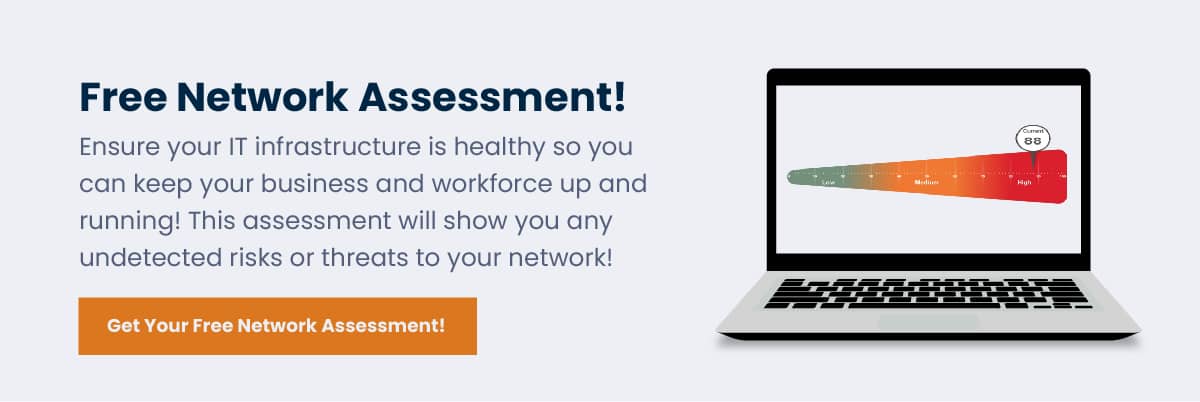4 Reasons To Use Patch Management Software For Your Business
Managed IT | Network Infrastructure | Network Security & Cybersecurity | Patch Management Software
With each passing day, the number of ransomware attacks increases and continues to be an ongoing threat amongst small and large businesses alike. Suppose your organization has several computers and servers. In that case, it can be challenging to ensure that all of them are updated and secure.
Manually managing every patch can be pretty chaotic and risky. Implementing patch management software to patch your software with vulnerabilities can help ensure that your network is up-to-date and secure from possible data breaches.
At LDI Connect, ensuring that our client’s IT infrastructure is secure and updated is of top priority. We implement Connectwise’s patch management solution once we’ve assessed your current security posture through an IT Network Security assessment.
This article will clearly define what patch management is and the four key reasons your business uses it. By the end of this article, you will understand how important patch management is to securing your IT environment.
What Is Patch Management?
Patch management is the process of applying and administering patches to security protection software. These patches serve as updates that correct any vulnerabilities or bugs in the software.

Applications, operating systems, and embedded systems such as network equipment are common areas that require patches.
A patch can be used to fix a vulnerability found after a software release. This ensures that the assets in your IT environment are secure and defenseless against exploitation.
How Does Patch Management Work?
Patch management software automates various stages of the patching process by scanning for security vulnerabilities. A managed services provider can implement it, your in-house IT department, or a third-party vendor.
The software can automatically deploy patches without any manual interference. Once the patches are deployed, the software will report the health and status of the tasks that have been updated.
Companies can utilize a patch management solution to update any security endpoints that require patching.
What Are 4 Reasons To Use Patch Management Software?
Your company can benefit from utilizing patch management software in a variety of ways. Patch management software is essential for the following four key reasons:
1. Secures Your IT Environment
Patch management identifies vulnerabilities on your software, applications, and servers. It fixes them by applying a piece of code tailored to fix a particular bug.
Vulnerabilities left unattended within your IT environment are susceptible to cyber-attacks. When your company is regularly patching vulnerabilities, you are helping to mitigate risks existing within your IT infrastructure.
Potential security breaches are no joke. Protecting your organization from potential cyber-attacks is of the utmost importance and should be prioritized.
Suppose your company is interested in securing its IT environment. In that case, it’s important to create a cybersecurity plan that involves a streamlined cybersecurity procedure if a security breach occurs.
2. Helps Integrate Innovative Technology
By choosing to use patch management software, you can update your technology with improved features and functionality.
Through the consistent innovation of your technology, your company can be aware of the latest technology that can improve and better secure your software at scale. Not only does this add to the evolution of your IT environment, but it helps your company keep informed of new and improved ways to protect your environment.
An updated and innovative IT environment will more than likely stay ahead of any cyber attacker looking to infiltrate your network. Diligent asset management will provide your company with the knowledge of version types, operating systems, and IP addresses that exist.
The more frequently you maintain and innovate your network of devices, the more informed your company will be.
3. Apply Patches & Test
Applying patches can close any security gaps within an IT environment. However, without stress testing, your company won’t ensure that the patches are working.
One way to ensure that everything is running well is to apply the patches to a sample of devices or applications within your IT environment. Your patch management software of choice will typically give you the option of which assets to apply patches to first.
After, you can then stress test those particular assets to ensure that the patches will not cause problems to other business factors.
Once you have run this stress test, your company can prioritize what vulnerabilities need to be remediated first and begin patching to secure your environment moving forward.
Applying patches and stress testing one batch of assets is an intelligent way of dipping a few toes in before jumping in. This can prevent widespread problems from occurring later on.
4. Helps Keep Track Of Security Controls
Whether your company operates twenty servers and applications or only two, keeping track of your firewalls, antivirus, and malware protection software is critical.
Your company should know where these security controls are, what they’re protecting, and which assets are associated with them.
While your patch management process and cybersecurity plan are personal to your company, it’s always good to understand your security controls and that they’re running smoothly to support system uptime.
Ready To Use Patch Management Software?
Patch management software can keep your IT environment secure and up-to-date by patching any security vulnerabilities existing on your network.
Think of patching as closing any gaps or any holes where cyber attackers can crawl in.
Suppose your company already routinely updates your IT environment. In that case, implementing a patch management solution may not be necessary right now.
However, if you own many outdated devices and your software hasn’t been updated in a while, it’s worth getting an IT security risk assessment and considering a patch management solution for your company.
Refer to our article related to the importance of cybersecurity awareness training for employees to learn about more cybersecurity solutions.
Reach out to an LDI Connect representative today to learn more about the managed IT services we offer.
